How San Francisco fell behind on housing its homeless population
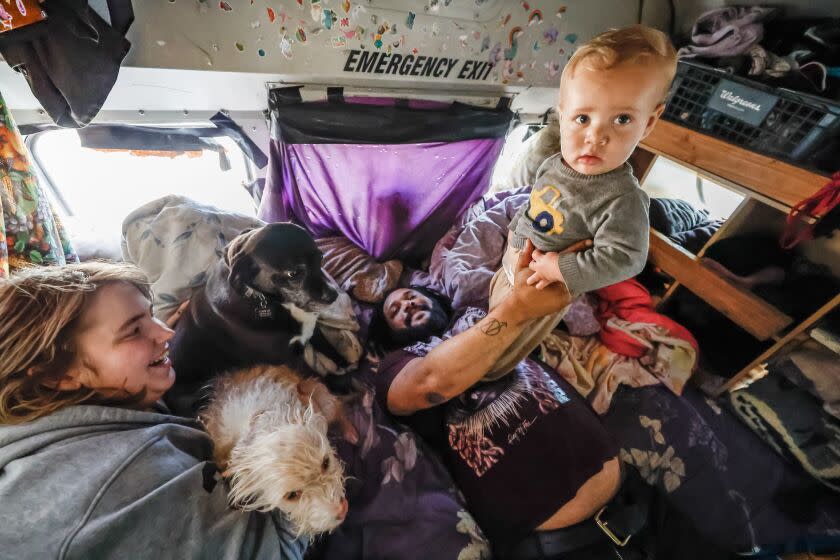
Reyna De La Cruz had looked at 15 apartments, at least.
About half of the landlords rejected her. The other half never responded at all.
De La Cruz and three of her kids were living in a camper parked on a corner in San Francisco’s Bayview neighborhood. They’d been there since De La Cruz was laid off from her job at Wingstop in 2020. But their little family needed a real home. De La Cruz kept a wish list: enough bedrooms and bathrooms for her and her kids, a kitchen big enough to cook in regularly and, if she was lucky, a yard.
In May, the San Francisco Housing Authority had issued De La Cruz an emergency housing voucher. These vouchers, part of a $1.1-billion Biden administration effort to rapidly house Americans during the height of the COVID-19 pandemic, are supposed to be a golden ticket: a promise that the federal government will pay most of a recipient’s rent for years.
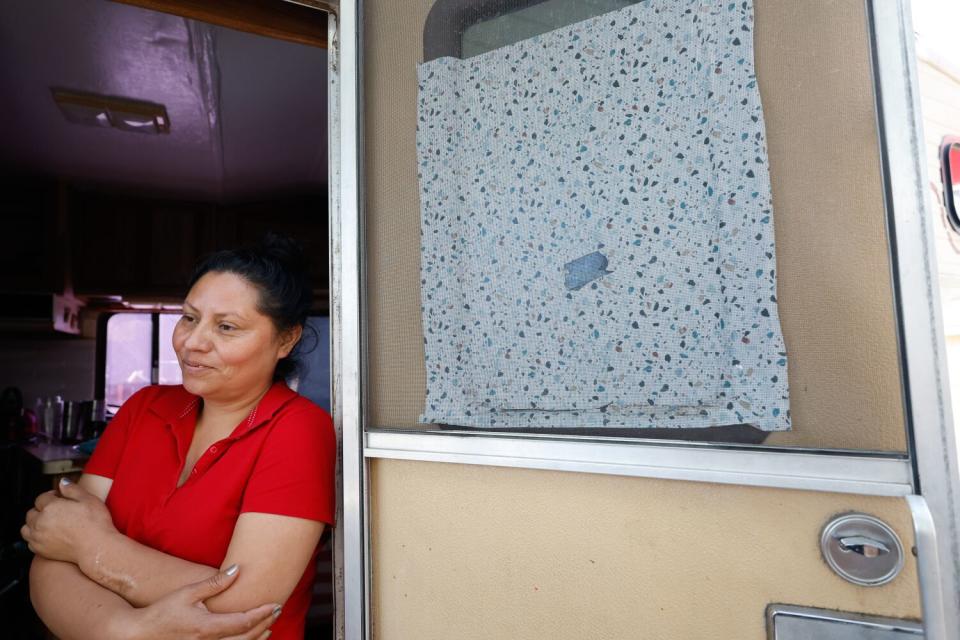
But four months after receiving the voucher, De La Cruz and her family were still homeless. The hurdles to finding a home felt insurmountable: she spoke Spanish, not English; few units were available, and if they were, they were too expensive; and landlords didn’t want to accept a voucher, or house someone who was homeless.
Similar problems plague other cities' efforts to use the new vouchers.
A year and a half after they were handed out, just 56% of the new vouchers have been used across the country. In California, which has one of the worst housing crises in the nation, less than 50% of emergency housing vouchers are in use. And in San Francisco — one of the most expensive housing markets in the country — just 44% of the 906 vouchers the city received have actually housed people.
As The Times has previously reported, some expensive cities, including San Diego, have excelled in placing people into homes with the vouchers.
Despite the efforts of its local housing agency and city government, though, San Francisco has fallen behind. Voucher recipients like De La Cruz find themselves lost in the rental market maze, clutching their golden ticket to a home, but with little guidance on how to reach the prize.
“I sometimes don’t want to keep on going. I want to just give up,” De La Cruz said. “If I had somebody sitting next to me, guiding me, coming with me to the units, calling the managers and landlords” — maybe then, she could put her voucher to use and secure a home for her family.
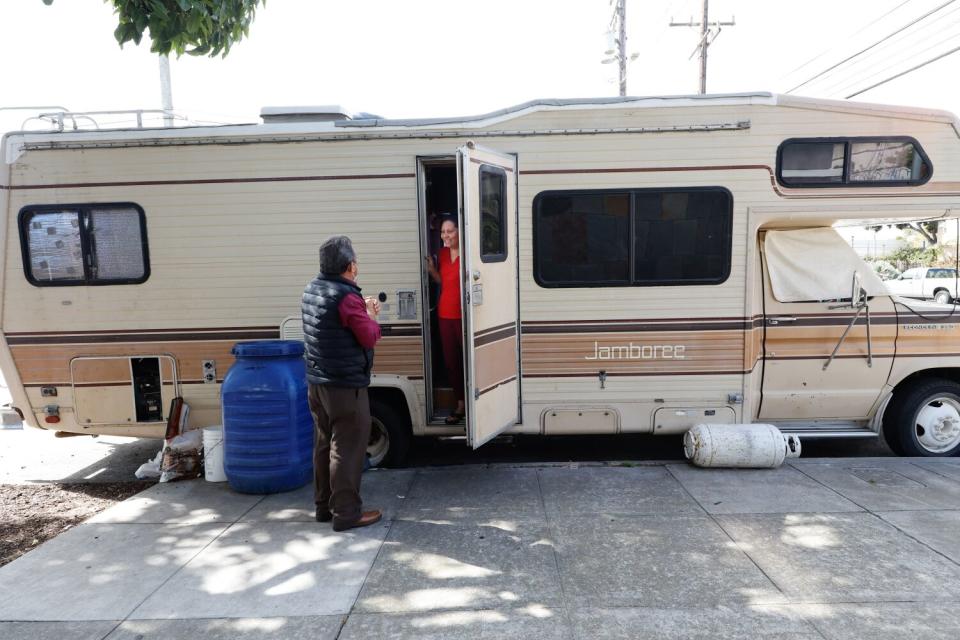
To find a home, De La Cruz and other San Franciscans with emergency housing vouchers must navigate not only the city's tight rental market, but also the thicket of organizations the city has enlisted to help them.
De La Cruz, a soft-spoken 37-year-old who immigrated from Guatemala in 2014, had been living homeless in Bayview for just over a year when Efrain Sandoval, a program manager for Catholic Charities SF, knocked on her door in December 2021.
De La Cruz was struggling. Her hair was often thrown into a low bun, and although her smile was warm, her eyes betrayed stress. The tank that holds the family’s water supply needed to be refilled every three days. The camper was too small to cook properly. Her kids, two in their teens and one in his early twenties, were angry about their situation, and threatened to run off. No one had enough space.
Three months later, Sandoval showed up at De La Cruz’s door again. His organization, he explained, was among a handful of community-based nonprofits that the city relied on to refer people into the voucher program. The group's office was just a short walk away.
Sandoval unfolded a table and chair — a makeshift office — on the curb outside De La Cruz's camper, and walked her through the 29-page voucher application, finishing it that same day.
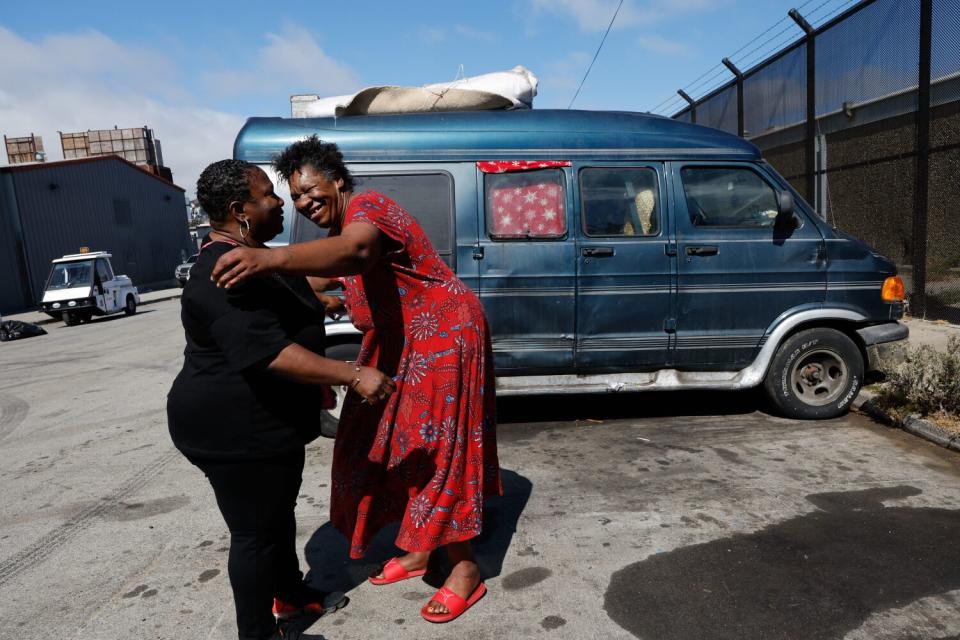
In May, the San Francisco Housing Authority approved De La Cruz for a voucher. But the agency couldn’t reach her; De La Cruz was behind on her phone bills.
Instead, Sandoval saw De La Cruz’s name on the housing agency’s list of people slated to receive a voucher. He tried calling and texting De La Cruz. Later that day, he walked over to her camper, discovered her phone was out of service, relayed the good news and told her the next steps.
She eagerly attended a briefing at the housing authority and received a packet of information on the process: how much her voucher was worth, a notice that the voucher would expire in 120 days, a checklist for what to look for in a new home, a delineation of her rights, and a list of resources.
The packet also included a new point of contact — a housing navigator at Providence Foundation, another local nonprofit, who would help her find a home. In San Francisco, the organizations that help voucher recipients find homes are separate from the nonprofits that refer people into the program. Catholic Charities SF fulfilled its role in signing De La Cruz up for a voucher, and now Providence Foundation would help her with the housing search.
Hundreds of miles to the south, San Diego uses a different system. About half of the service providers that support that city’s emergency voucher program not only help clients apply for vouchers, but also assist them in their housing search. The San Diego Housing Commission also hired five full-time specialists to help out with housing searches that referring agencies can't handle. San Diego's voucher recipients typically deal with fewer entities and are less likely to fall through the cracks.
In San Francisco, De La Cruz was not so lucky. Within weeks of receiving her voucher, she realized she would be on her own in her search for a home. Her point of contact at Providence didn’t speak Spanish, and no one at the agency came knocking on her door or knew exactly where her camper was parked, she said. (The Times called Providence's number multiple times to ask about De La Cruz's case; no one answered. A voicemail message was not returned.) She found that calling the other resources listed in her briefing packet was fruitless. Usually, no one picked up. When someone did, she ran into a language barrier.
With more than $4,000 a month in federal funds to help her pay for housing, and her name in the files of at least four city and nonprofit groups, De La Cruz was still left alone to navigate the housing search. So she limited it. She considered only the listings that she could pull up on her phone on Zillow. She mainly toured apartments around Bayview, near where she was parked. And she only talked to landlords who spoke Spanish.
Often, before she could even apply for a unit, landlords would tell De La Cruz that they didn’t work with people who had housing vouchers. (It’s illegal to discriminate against voucher holders, but landlords remain reluctant to accept them.)
If a landlord was willing to accept a voucher, she’d find out that the unit cost more than her voucher would cover.
Voucher recipients typically pay 30% of their income toward rent, and the voucher covers the rest. Most cities use a single number, called a fair market rent rate, to determine the maximum amount a housing voucher is worth. For a three-bedroom voucher in San Francisco, that number is $4,111. Emergency housing vouchers can be used at 120% of the fair market rate, which means De La Cruz’s three-bedroom voucher can be applied to a unit with a rent of up to $4,933 per month. On Apartment List, the average monthly rent for a three-bedroom in San Francisco tops $5,000.
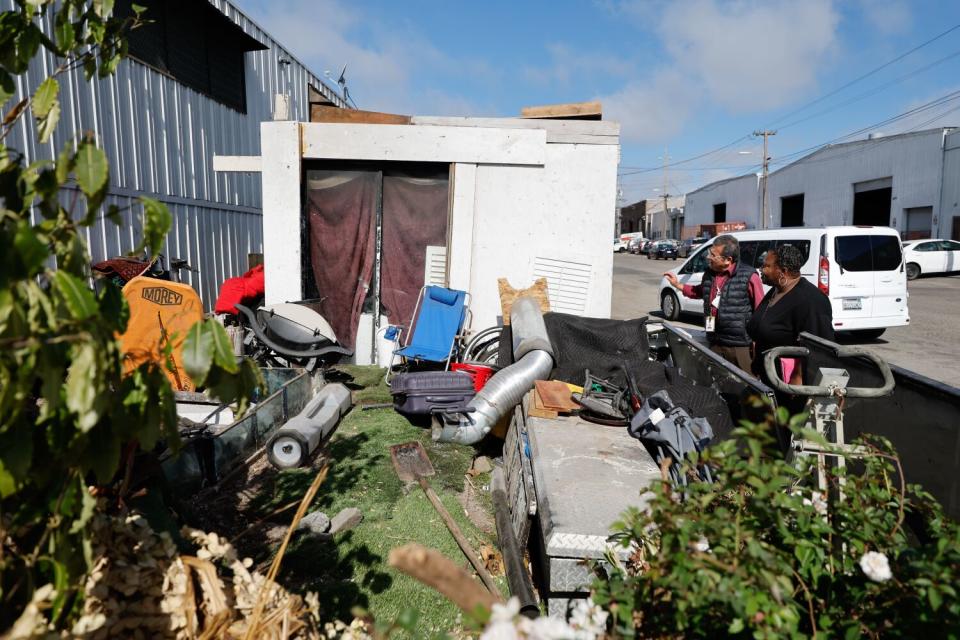
A more nuanced approach might offer advantages. Some jurisdictions across the U.S., including San Diego, use small-area fair market rents, which are calculated by ZIP Code within a city. This means that the amount a voucher can cover varies by neighborhood. In more expensive neighborhoods, vouchers are worth more.
Most of the jurisdictions the federal government has required to use this system — including San Diego — have housed voucher recipients at rates above the national average. Housing agencies elsewhere are allowed to opt in, but many expensive cities, including San Francisco, have not.
Even if De La Cruz managed to find a landlord willing to work with vouchers and a unit within her price range, she faced a third hurdle. Rental applications generally request potential tenants to list a current address, and De La Cruz did not have one, tipping landlords off that she was currently homeless. After that, she’d often just never hear back.
“I don’t want to lie on applications, either,” De La Cruz said. “I feel trapped.”
Her struggle to secure a home dragged on for months.
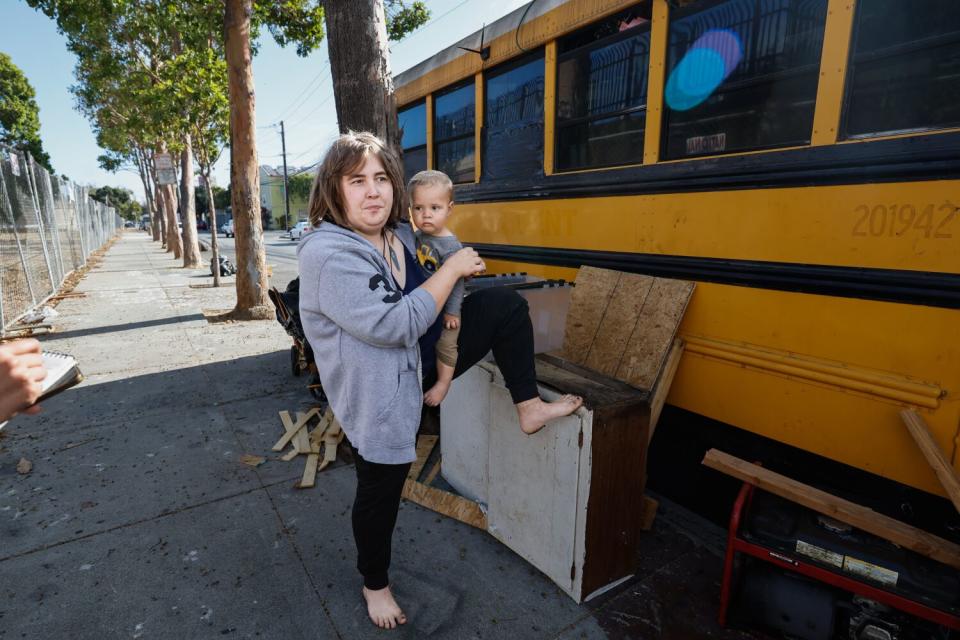

In San Francisco right now, about 200 people have the new vouchers in hand, are ready to be housed and are still homeless. Nationally, that number is around 30,000 people.
Just steps from De La Cruz’s camper, a family lives on a school bus parked against the curb. Molly Bodkin has had an emergency housing voucher since June, which she hoped could finally house her, her partner, and their two children. But her attempts at securing housing were fruitless — poor credit meant rejection after rejection from landlords. After years of homelessness, the housing search and application process felt too daunting, and, like De La Cruz, she also felt like giving up.
Even success stories came with struggle. South of Bayview, a family of four with an emergency voucher moved into a home in San Francisco’s Visitacion Valley in September. The Torres family secured housing after months of denials — also pinned on bad credit — and little guidance through the program from housing support services, said Doria Torres. The family’s saving grace came from a property manager who was touched by their story. Torres was grateful, but nearly gave up on the process as well.
The San Francisco Housing Authority and the city’s Department of Homelessness and Housing point to the city’s tough rental market as a reason for the city's low voucher utilization numbers: Rent is high, vacancies are low and receiving 906 vouchers at once and efficiently distributing them is a monumental task, they said. Given these hurdles, the city remains proud of its progress with the vouchers, officials said, particularly as local government agencies and nonprofits operated with fewer staff due to the pandemic.
The city’s service providers “are very committed and understand the importance of maintaining communication and engagement with our individuals and families. … Sometimes we lose touch with folks if their phone number changes. That happens pretty often. Our partners are really aware of that possibility, and they gather information about where folks hang out and where they're staying,” said Alan Guttirez, manager of housing subsidy programs with the Department of Homelessness and Supportive Housing. “Sometimes there’s just barriers to staying in touch.”
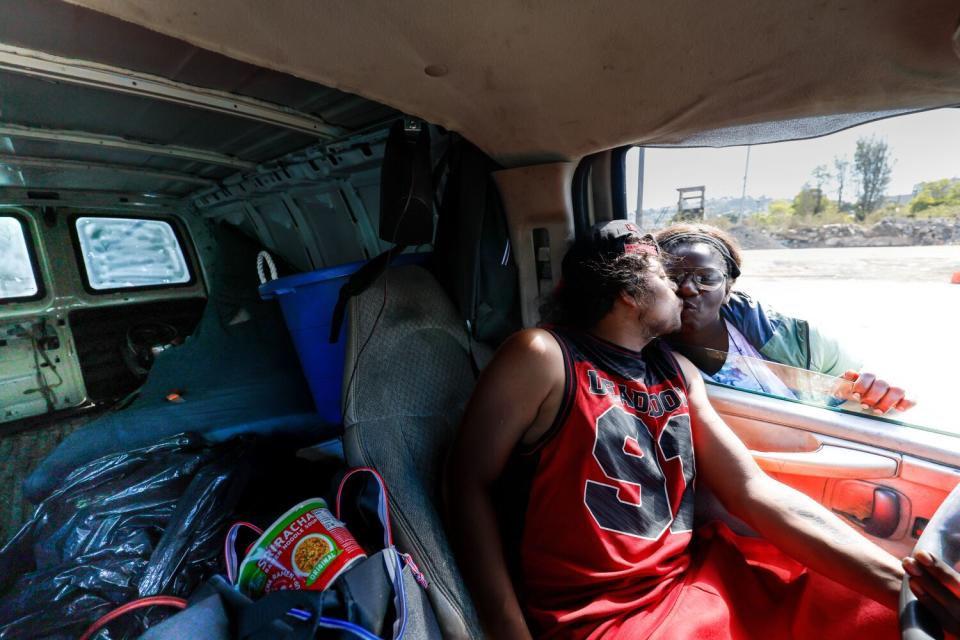
One morning in August, Sandoval, the Catholic Charities SF program manager who had knocked on De La Cruz’s door the previous winter, noticed that she was still living out of her camper.
De La Cruz told him about her struggles to secure housing even with the voucher. Sandoval said he reached out to contacts at the city on her behalf, and pushed them to reassign De La Cruz to a Spanish-speaking housing navigator in the neighborhood.
Jessica Lopez, De La Cruz's new housing navigator — also with Catholic Charities — pulled much of the weight of the housing search. She called landlords to verify if they’d be willing to work with a voucher (and reminded them it’s illegal to refuse), explained that costs like the rental deposit would be covered, told the family's story and assisted with applications.
By a sunny Wednesday in mid-September, Lopez had submitted paperwork for a unit in Bayview. The landlord just needed to decrease the rent by about $80 a month to fit within De La Cruz’s voucher limits. To persuade the landlord to accept the application, the city offered a $1,000 incentive, Lopez said.
On Oct. 15, De La Cruz and her kids finally moved into a new home. It was freshly painted blue, trimmed in off-white, with stairs leading to the entrance, four blocks away from where her camper used to be parked.
It even had a yard.
This story originally appeared in Los Angeles Times.

